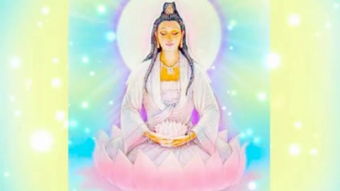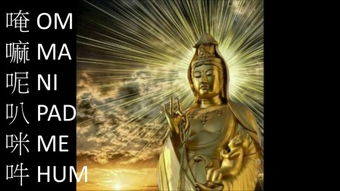
Om Mani Padme Hum: A Deep Dive into the Tibetan Mantra
The mantra “Om Mani Padme Hum” is one of the most sacred and powerful chants in Tibetan Buddhism. It is often chanted by practitioners to invoke the blessings of Avalokiteshvara, the Buddha of Compassion. This article delves into the meaning, history, and significance of this mantra from various dimensions.
Meaning and Symbolism

The mantra “Om Mani Padme Hum” is composed of four syllables, each carrying its own profound meaning:
| Syllable | Meaning |
|---|---|
| Om | Represents the universe and the ultimate truth |
| Mani | Refers to the jewel or the precious gem, symbolizing the purity of the mind |
| Padme | Means the lotus flower, representing the pure and beautiful mind |
| Hum | Is a devotional offering to Avalokiteshvara, the Buddha of Compassion |
Together, these syllables form a powerful mantra that is believed to purify the mind, alleviate suffering, and bring enlightenment.
History and Origin

The origins of the “Om Mani Padme Hum” mantra can be traced back to the 8th century when it was first introduced to Tibet by the Indian Buddhist master Padmasambhava. Padmasambhava, also known as the “Second Buddha,” is credited with bringing Buddhism to Tibet and establishing the foundation for the Gelugpa school of Tibetan Buddhism.
The mantra quickly gained popularity among Tibetan Buddhists, and it became an integral part of their spiritual practice. Over time, the mantra spread to other regions and has become a symbol of Tibetan Buddhism worldwide.
Practical Application

Chanting the “Om Mani Padme Hum” mantra is a common practice among Tibetan Buddhists. Here are some ways in which the mantra is used:
-
For meditation: Practitioners often recite the mantra while meditating to focus their minds and invoke the blessings of Avalokiteshvara.
-
For healing: The mantra is believed to have healing properties and is often chanted for the well-being of oneself and others.
-
For protection: The mantra is considered to offer protection from negative energies and obstacles.
-
For generating compassion: Chanting the mantra is a way to cultivate compassion and loving-kindness towards all beings.
Art and Culture
The “Om Mani Padme Hum” mantra has left an indelible mark on Tibetan art and culture. It is depicted in various forms, including:
-
Thangka paintings: These are traditional Tibetan Buddhist paintings that often feature the mantra in intricate designs.
-
Mani wheels: These are wheels made of metal or stone that are inscribed with the mantra. They are spun as a form of prayer.
-
Mani stones: These are stones that have been carved with the mantra. They are often placed in piles or arranged in patterns.
Conclusion
The “Om Mani Padme Hum” mantra is a powerful symbol of Tibetan Buddhism, representing the ultimate truth, compassion, and enlightenment. Its profound meaning, rich history, and practical applications have made it an essential part of the spiritual journey for countless practitioners. Whether you are a Buddhist or simply curious about this ancient mantra, exploring its many dimensions can provide a deeper understanding of the rich tapestry of Tibetan culture and spirituality.




